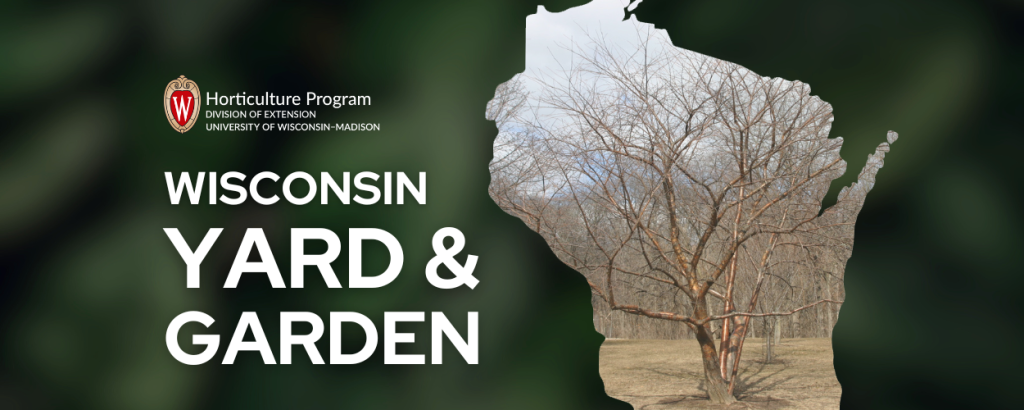
This article was originally published for the Northwoods Yard and Garden column by Extension Iron County.
Tree trunk condition is one of the key areas involved in assessing tree health. Just under the bark lies the vascular system, which is the lifeline of water, nutrients, and food transport. Over the course of winter there are physical injury possibilities to the bark and trunks of some trees, in particular younger trees with smooth bark, to be concerned about.
Winter weather extremes can cause physical damage to the trunk. Sunscald injury, primarily due to the sun unevenly heating the trunk in late winter, is a prime example. The sun starts getting stronger in late winter yet nighttime temperatures often drop to single digits or lower. Smooth or tender bark on the south or southwest side of trunks of younger trees is most prone to damage as bark warmed in the day rapidly cools at night.
Areas of bark will pull away from the wood underneath, damaging the transport system of the tree. Damaged areas may appear sunken, discolored, and may have peeling bark. Fruit trees and maples are among the species most prone to damage. Callused areas may appear on the edge of damaged areas as trees attempt to wall off injury from previous years.
To help avoid this type of injury, the trunks of younger trees can be wrapped in late fall. Various light-colored tree wraps are available to help reflect excess heat and reduce potential damage. Start wrapping at the bottom and use a shingle effect to allow water to easily run off.
Secure the wrap at about the first set of branches on the trunk. Keep trees wrapped until late spring.
Wildlife feeding on bark presents another issue for trees. Voles, or field mice, will gnaw on bark near the base of the trunk. Remove vegetation, mulch, or debris adjacent to the base of trees that provides cover for them. A cylinder of hardware cloth placed around trunks and secured into the soil will keep voles at bay. For rabbits and deer, a taller cylinder of either hardware cloth or poultry wire can be used to provide a barrier to protect bark from damage. Plastic tree trunk guards are also commercially available. Protect trunks higher than the anticipated snow cover depth.
Repellents are another option, especially if wrapping is not practical. Repellents are intended to reduce but not eliminate damage. Always be sure to read and follow repellent directions and reapply, as necessary. Recognize that repellent results oftentimes are variable from location to location and from year to year.

About the Author
Bruce Spangenberg is a Horticulture Outreach Specialist with UW-Madison Division of Extension. Get answers to your lawn, landscape and garden questions anytime at “Ask Your Gardening Question.”




